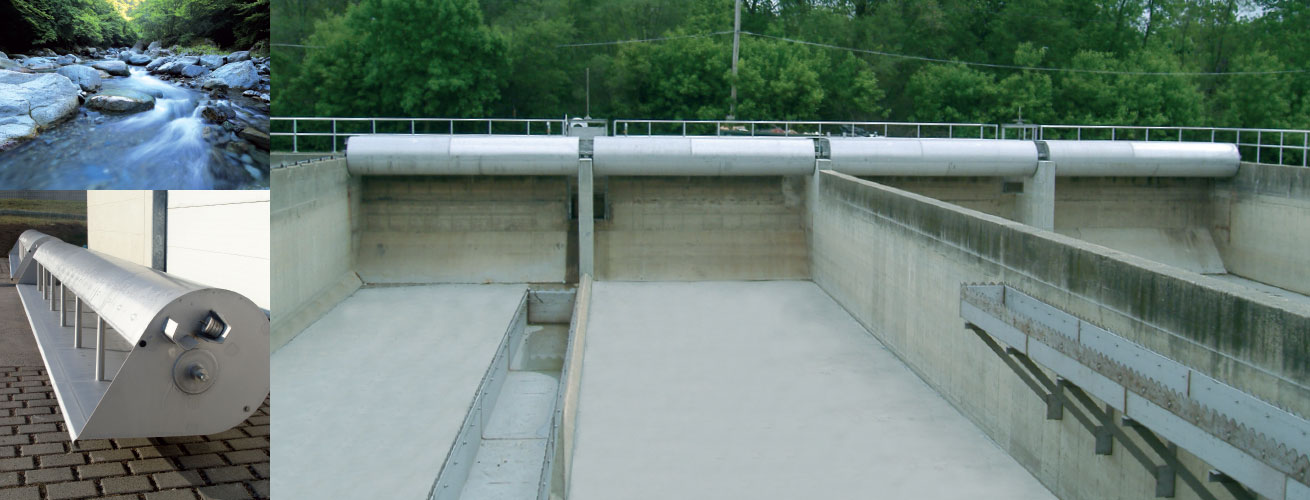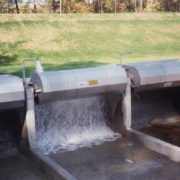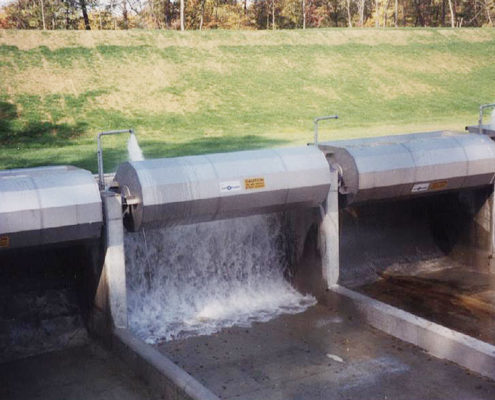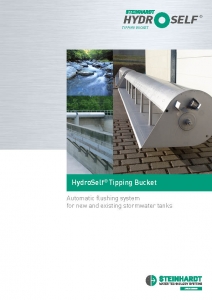Automatic flushing system for new and existing stormwater tanks
The System
Stormwater tanks in combined sewerage systems tend to collect heavy sediment deposits on the floor. These sediments consolidate during the next dry period if not removed. Problems of smells and organic loading on the receiving watercourse can result if these tanks are not properly maintained. It is desirable to clean stormwater tanks after every use as cost-effectively as possible.
The cleaning of stormwater tanks by means of tipping buckets is, along with flushing with gates, one of the most common methods used for the removal of sediments from the floor.
It is an operationally safe process, which has proved itself in numerous applications over decades. HydroSelf Tipping Buckets can be installed in new as well as in existing structures for the cleaning of rectangular stormwater tanks in open and closed chambers and is suitable for short flushing lengths of below 50 m.
The Function
The HydroSelf® tipping buckets consist of a specially designed cross-sectional form which ensures automatic release of the flush water with the return of the bucket to its start position. When filling is activated, the tipping bucket is filled to a previously set water level. During the filling process the centre of gravity of the tipping bucket shifts so that it turns automatically and the retained water is emptied against the back wall of the stormwater tank. The water flows down and is vectored down the tank by the provision of curved benching on the floor of the tank. This conversion of potential into kinetic energy creates a flushing wave of high velocity and great turbulence on the leading edge of the wave. It re-mobilises the sediments on the tank floor and transports them to the end of the tank into the receiving sump. After emptying, the tipping bucket returns automatically to its start position and is ready for operation again. If required, the Hydro-Self® tipping bucket can also be supplied with a control for manual or automatic operation.
The filling time of the tipping bucket is dependent on the inflow and the volume of the tipping bucket. The number of flushes required is dependent on the nature of the deposits. In most cases, one flush is sufficient. Several flushes may be necessary for especially severe deposits.
The HydroSelf® tipping bucket has one or more drain holes so that stormwater cannot accumulate in the bucket when not needed.
The Advantages
- automatic release of flushing wave and return to start position
- high cleaning performance and low energy costs
- no moveable parts in wastewater
- low-noise tipping with smooth sliding into the start position (from any position)
- flexible volume in any increment between 200 and 2000 l/s
- complete construction in stainless steel, in V2A or V4A as required
- water-tight ball bearings
- corrosion-resistant
- easy to install
- economic and easy mounting system for new structures or already existing tanks
- low maintenance flushing system
- bend-proof and torque-proof tipping trough
- minimal suspension strain due to optimal torque sequence
- minimised outlay in material, weight and costs due to CAD optimised construction
- filling with storm-water, domestic water, ground water or potable water





